Discovering design
In the bustling city-state of Singapore, where innovation meets tradition, the DesignSingapore Council announces the launch of its “People of Design” campaign. This initiative is a vibrant celebration of the unsung heroes among us—those individuals who blend creativity with practicality to enhance our daily lives through thoughtful design. From local artisans to tech innovators, these everyday visionaries are the heartbeat of Singapore’s thriving design ecosystem.
The campaign underscores the role of design beyond aesthetics, emphasising its importance as a crucial skill for navigating our increasingly complex world, fostering diverse career paths, and spurring cross- disciplinary collaborations. We speak with some of these visionary individuals whose stories are sure to inspire and may even spark your own design journey.
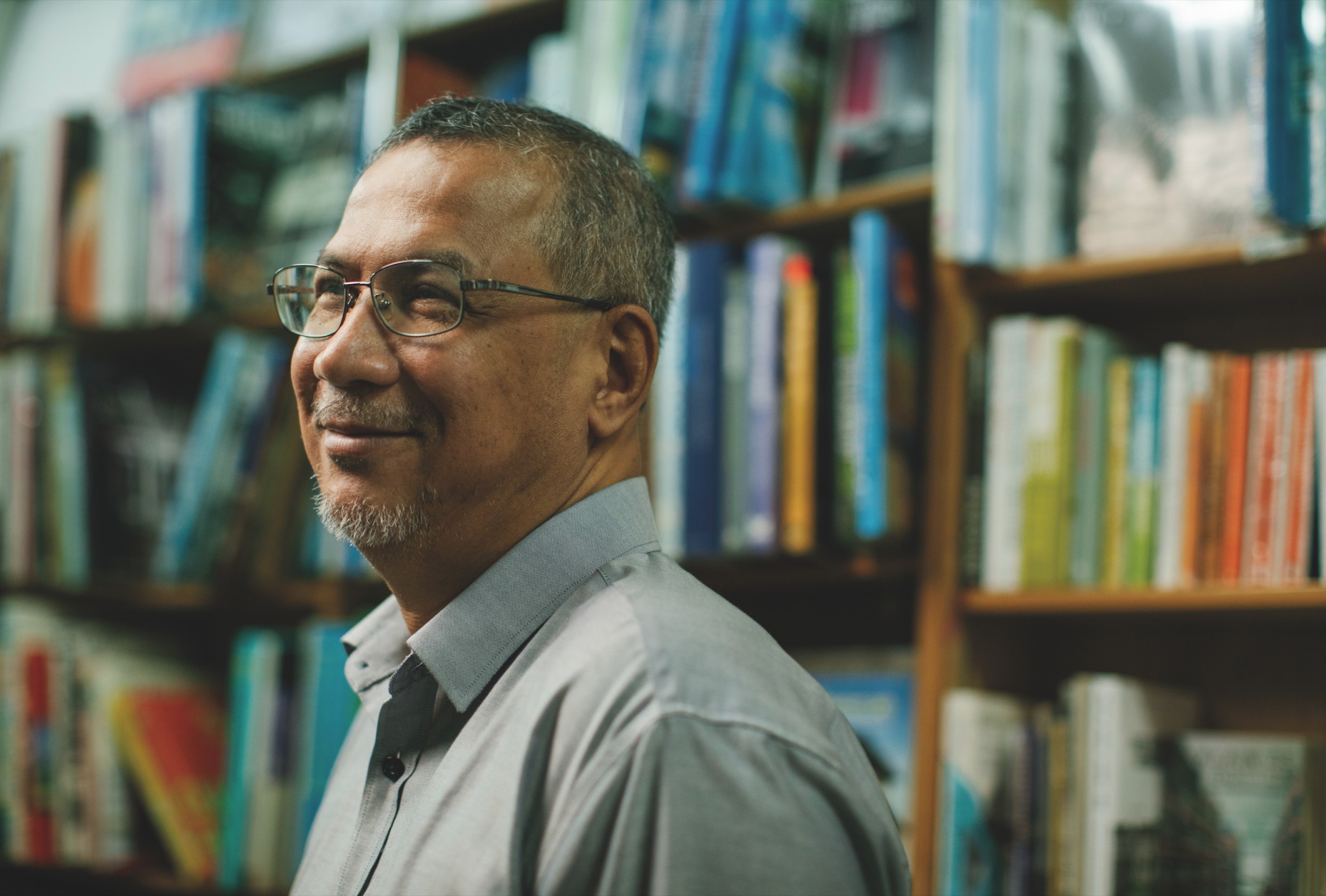
Image courtesy of Basheer Graphic Books
Abdul Nasser,
Owner of Basheer Graphic Books
How has Basheer Graphic Books adapted to the digital era while maintaining the relevance and appeal of print media?
Basheer Graphic Books has evolved with the digital age, ensuring the continued relevance and appeal of print media through a multi-channel strategy. This approach involves establishing a strong online presence via an online store, e-commerce platforms, and active engagement on social media platforms. These digital channels enhance the visibility and accessibility of print media, guaranteeing its continued significance even in the digital era.
What do you consider the most significant challenges and rewards of serving the local and regional design communities?
One of the most significant challenges that Basheer Graphic has faced while serving the local and regional design communities would be to keep up with rapidly changing trends. The rapidly changing trends prompt us to update our inventory to ensure we offer the latest and most relevant books to our customers. Another challenge would be competing with online shops (like amazon), particularly in terms of pricing. These online platforms often offer lower prices due to reduced overhead costs and the absence of physical stores. One rewarding aspect is when regional customers visiting Singapore make Basheer Graphic Books a must-visit destination.
This recognition brings a sense of fulfilment and validation.
Can you share insights into how you select the range of titles and materials to offer at Basheer Graphic Books?
We choose titles based on customer purchasing habits, requests, supplier recommendations, and social media trends. Most importantly, customer purchasing habits and requests offer valuable insights into the types of books that are in demand and popular. Understanding our customers’ specific interests and needs enables us to choose titles and materials that will greatly appeal to them.
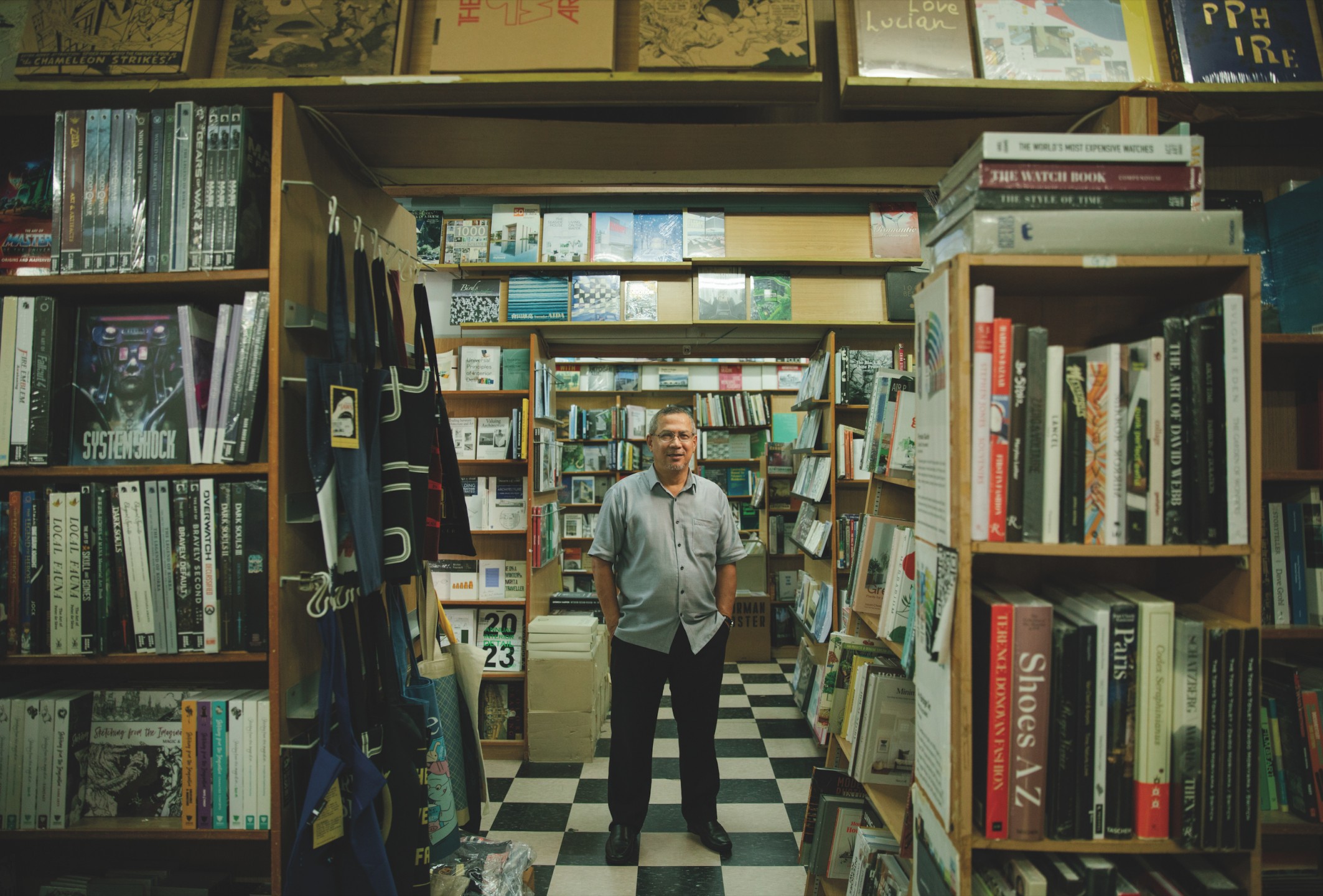
Could you share a story about a customer or a moment that reaffirmed the value of maintaining a physical bookstore?
A customer, a designer who had lived abroad for 17 years, returned to Singapore one day and visited Basheer Graphic Books. His visit was not only to purchase a book but also to confirm the continued existence of our bookstore. This experience reaffirms the value of maintaining a physical bookstore, demonstrating how our store remains a beloved and essential part of the community, creating lasting connections that endure over time and distance. Furthermore, many of my first-generation customers are also encouraging their younger generations to visit and purchase books from my bookstore which reinforces the significance of preserving a physical bookstore.
What future plans do you have for Basheer Graphic Books to further support and enrich the creative community?
One of my future plans would be to host more events, pop up stores, and collaborations at Basheer Graphic Books. In doing this, our goal is to establish a space where learning, networking, and the exchange of knowledge thrive within the design community.
Find out more about Basheer Graphic Books at basheergraphic.com.

Image courtesy of Repair Kopitiam
Veerappan Swaminathan,
Founder of Repair Kopitiam
What inspired the creation of Repair Kopitiam, and how has it evolved since its inception?
Repair Kopitiam was initiated as a simple meetup in late 2014, inspired by the Repair Cafe concept in the Netherlands. Some team members of the parent organisation (Sustainable Living Lab) had found a bunch of relatively functional items discarded by their HDB Block staircase and brought it into our makerspace (then at National Design Centre) to repair it. As this meetup group grew, we realised that the original Repair Cafe model would not work very well in Singapore due to the lack of DIY skills in the general population. So, our format evolved to incorporate training.
After 10 years, Repair Kopitiam has expanded into several sub-projects:
- Repair Kopitiam Singapore – Our standard model of public repair programmes every last Sunday of the month, helmed by Volunteer Repair Coaches.
- Repair Kampung – Our community-based model where we train and encourage neighbours to help each other with household repairs.
- Repair Club – A model which focuses on engaging male seniors in active ageing through a Repair Club formed at the local Active Ageing Centre (AAC).
- NSA Handyman Program – Aimed at Singaporeans and PRs aged 50 and above, these SkillsFuture courses have their fees subsidised by up to 80% and cover topics such as Furniture Repair, Fabric Repair, Electronics, Plumbing and Lighting.
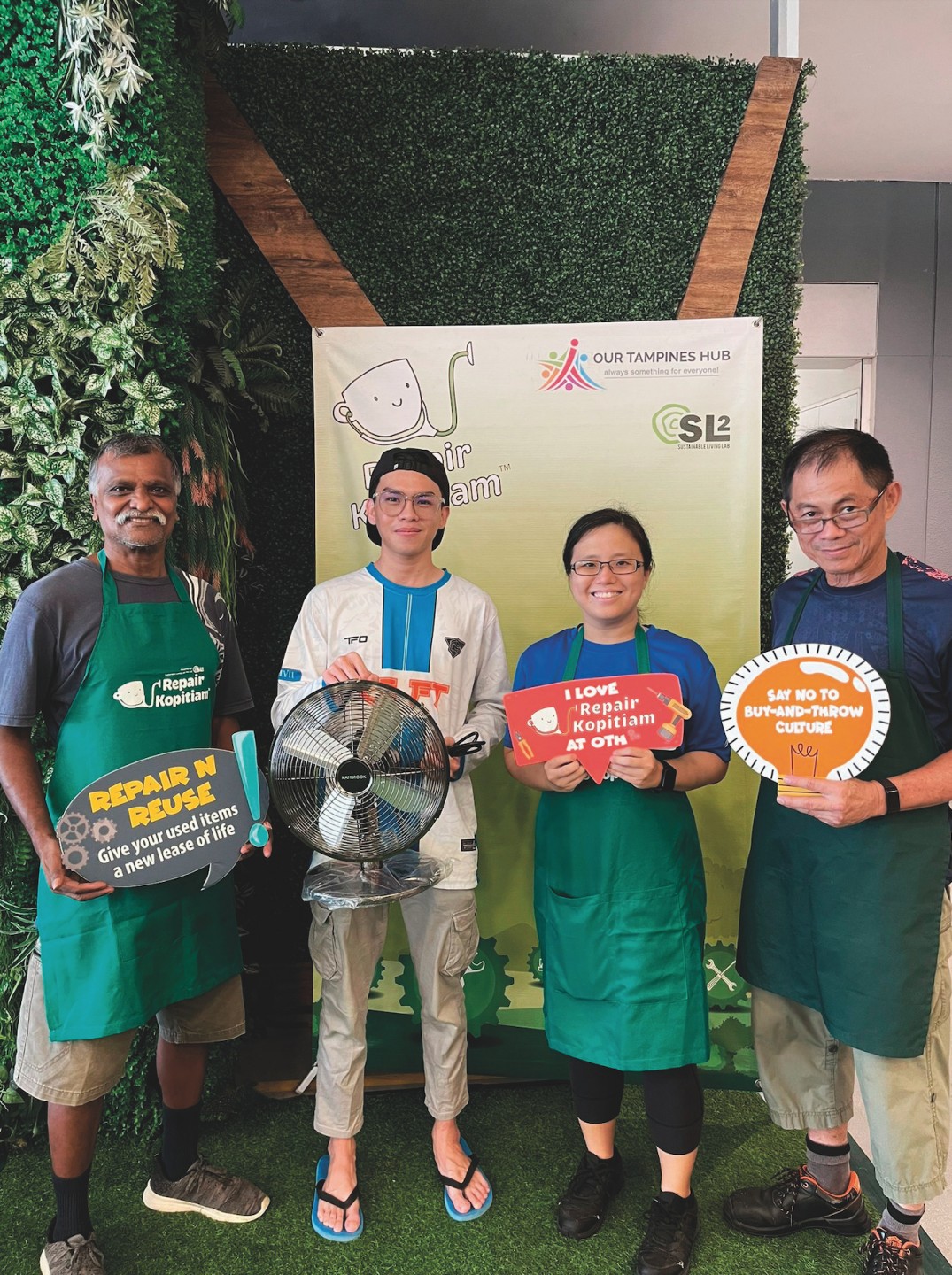
Image courtesy of Repair Kopitiam
How do you recruit and train your volunteer Repair Coaches, and what qualities do you look for in them?
Recruitment takes place over a few channels – during the Repair Kopitiam public event, via our website/social media, through word-of-mouth referrals. Generally, our volunteers are individuals who have expressed interest and approached us on their own – we seldom actively recruit. To be a Repair Coach, volunteers have to complete a requisite 10 session training (that takes place on Sundays). There are 4 in-person classes, 3 online classes and 3 on-the-job training sessions at public events. Lessons include theory & hands-on activities – safety, heat & motor appliance, and practical sessions where trainees can bring their own spoiled appliances & attempt to repair them. We accept anyone who is willing to learn & share their knowledge/experience/skills with others.
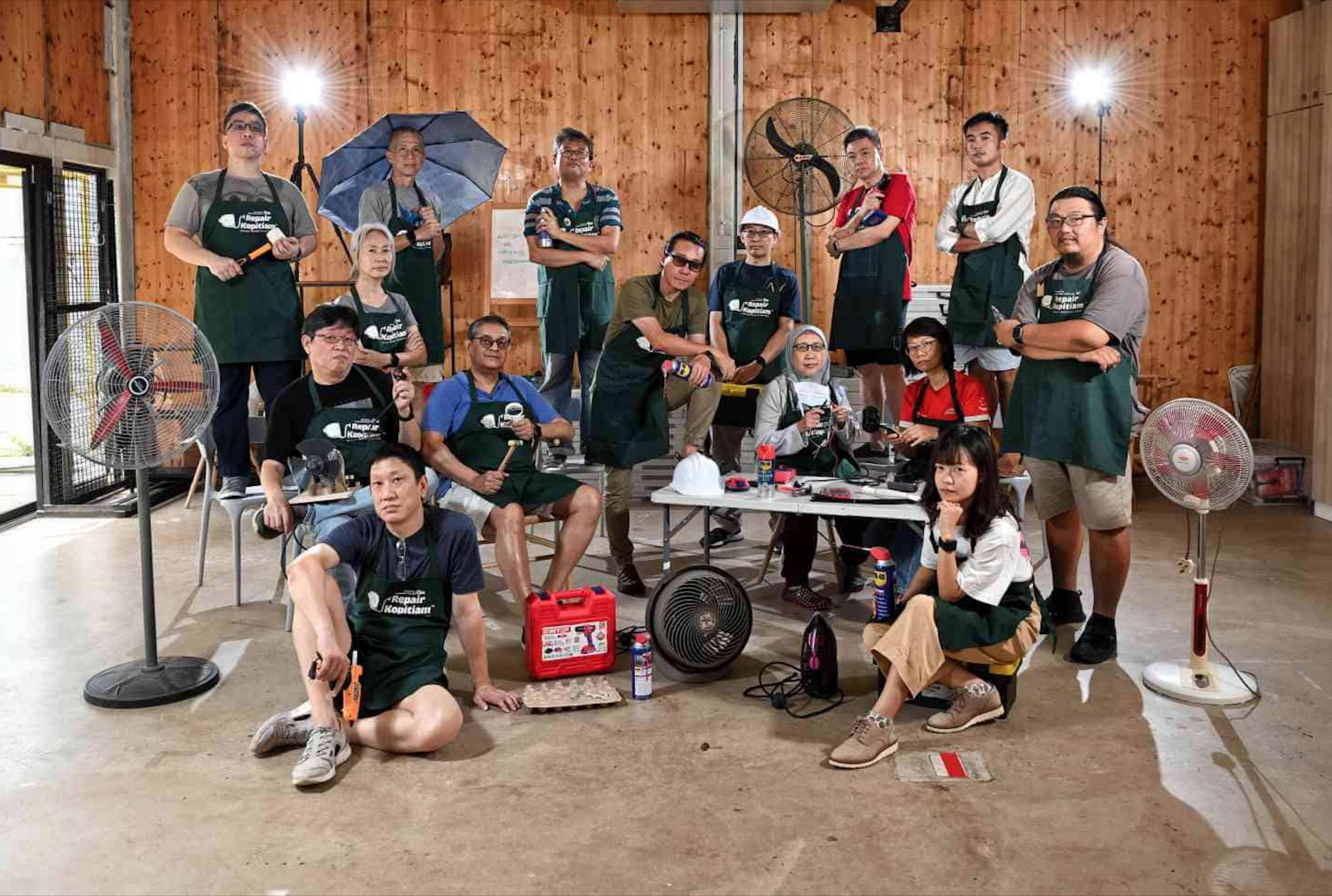
Image courtesy of Repair Kopitiam
Can you explain how Repair Kopitiam educates its participants about design and manufacturing through its repair sessions?
During training sessions & actual public events, trainees & public participants are taught the different parts and features of common household appliances, along with how to diagnose & dismantle them. This educates them how a product is designed & manufactured.
Can you share a particularly successful repair story that exemplifies the mission of Repair Kopitiam?
At the RKS@City Sprouts, a participant spent 6 hours fixing her flip clock (we usually aim for a 2-hour time limit for repairs). With a strong learning mindset, she insisted on repairing it herself and asked questions whenever she needed help. When her repair was accomplished despite the challenges, she was ecstatic and felt a strong sense of accomplishment. To us, this embodies the true Do-It-Yourself spirit that we try to inculcate at Repair Kopitiam.
Find out more about Repair Kitchen here at repairkopitiam.sg.
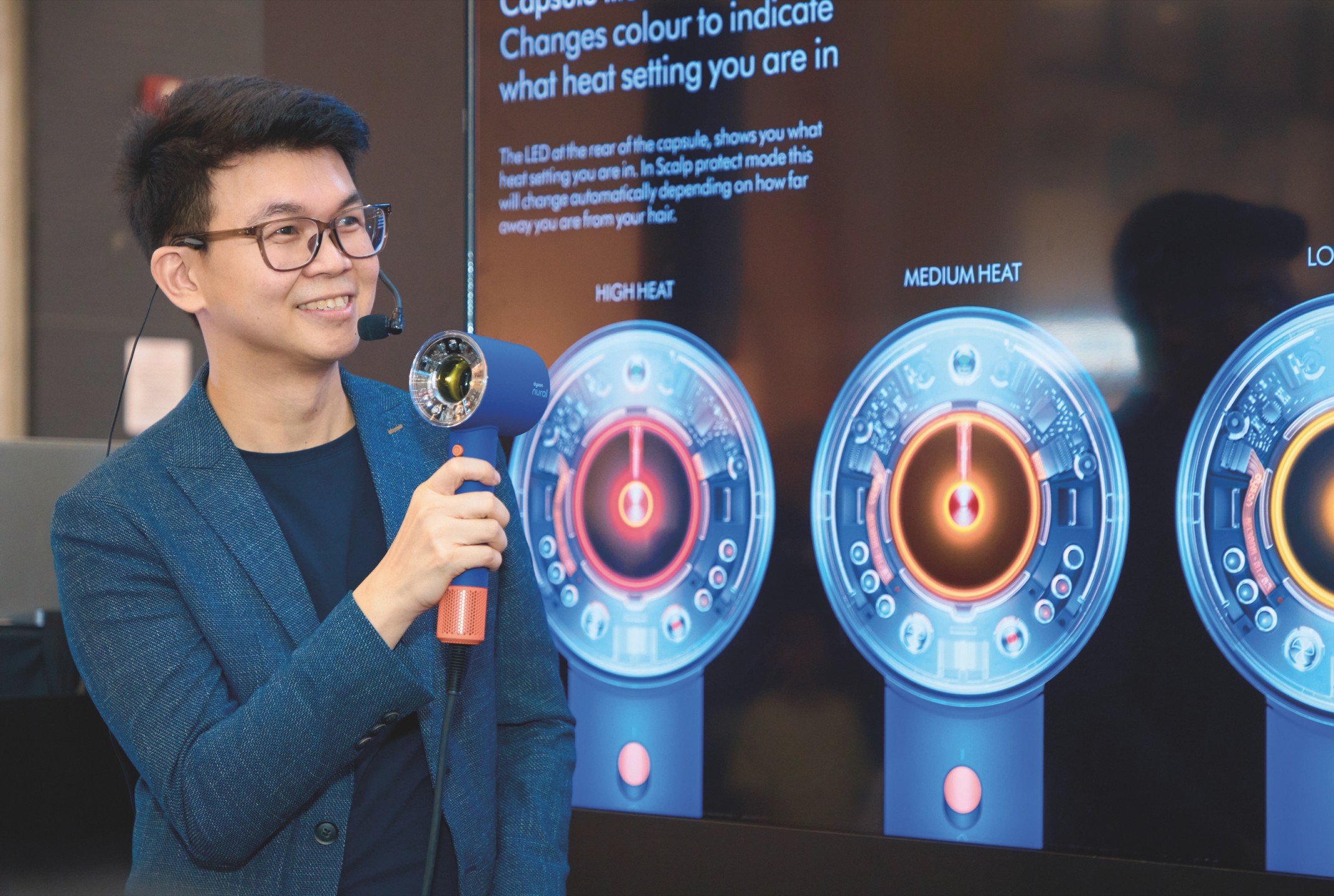
Image courtesy of Dyson
Simon Loh,
Senior Engineering Manager, Dyson Design Team
How does the Dyson Design Team approach challenges in creating new products for the beauty and lifestyle sectors?
At Dyson, we always try to solve problems that others ignore and pioneer technologies that are different. It’s not about creating products that are gimmickry. We approach each challenge by focusing on engineering fundamentals and starting from scratch to push boundaries.
Dyson brought much needed innovation to the hair care industry with the launch of the Dyson Supersonic hair dryer in 2016 and continues to do so with the latest additions to our hair care range, the Dyson Airstrait straightener, Nural
and Supersonic r hair dryer. Our Dyson Beauty products stem from a decade of research – from the hair’s structure to airflow dynamics – while understanding the effect of thermal, mechanical and chemical damage. These comprehensive hair research studies allow us to understand different hair types, styling behaviours, and even perceptions of hair types and hair health around the world.
One example would be the Dyson Airstrait straightener, which I’ve worked on since 2019. Based on users’ feedback and market research, we aimed to create a wet-to-dry straightener that ensures optimal user comfort. To achieve this, our engineers conducted intensive experimental testing to ensure that the hair strands can splay across the straightener evenly and do not get snagged, a common issue found in other straighteners.
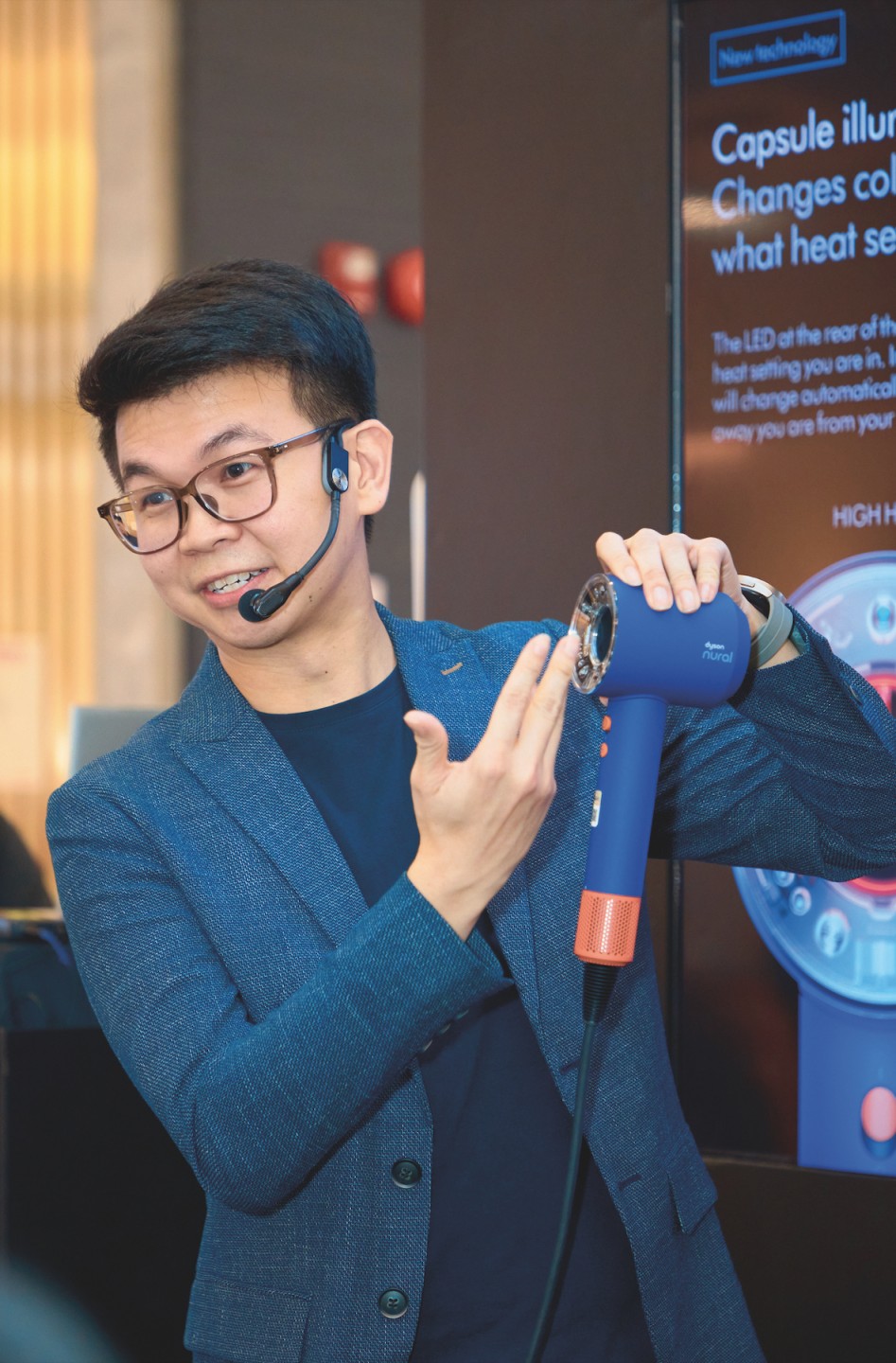
Image courtesy of Dyson
What are the key factors that drive innovation within your team, and how do you foster an environment that encourages creative thinking?
Dyson has always invested heavily in R&D, allowing us to use the best tools and push for new technological advancements. In fact, Dyson is investing more than £9m per week into Research & Development across our main research centres in the UK, Singapore, Malaysia and the Philippines.
As a manager myself overseeing a team of 19 talented engineers, I believe embracing failures is vital to creativity. It is important that we provide our engineers a safe environment to fail so they could be pushing the limits beyond what is taught in a design playbook. Also, by giving them a sense of ownership and independence, it will motivate our engineers to explore various concepts and drive innovation.
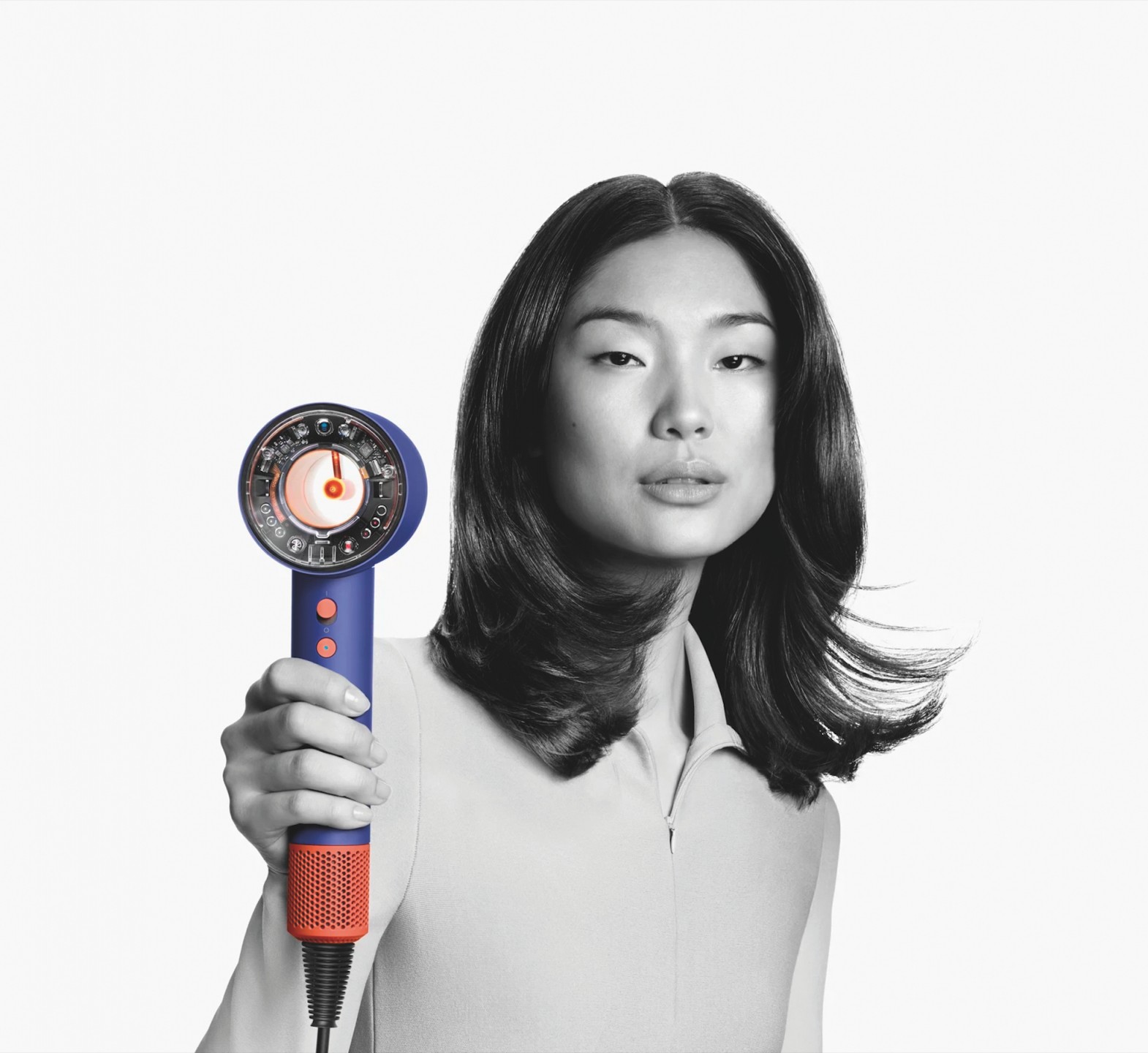
Image courtesy of Dyson
What role does sustainability play in your design decisions, especially concerning materials and product lifecycle?
‘Lean engineering’, and is one of our core philosophies in Dyson, which enables us to use science, engineering, and behaviour change to improve performance while using fewer resources. For example, when Sir James Dyson first developed cyclone technology for the DC01 vacuum cleaner, we reduced the need for wasteful bags across many households.
We also design our products to last, so they do not need to be replaced frequently. As design engineers, we take pride in our design reliability, ensuring it can withstand drops and knocks as long as it is reasonable in user’s daily usage.
Could you share a specific example of a project where interdisciplinary collaboration was crucial to its success?
All of our Dyson products require interdisciplinary collaboration, given the complexity of our machines. However, the Dyson Airstrait straightener was a particularly special project to me as I was deeply involved in design and development from start to finish. The machine required all key functions to work seamlessly, such as airflow manipulation, filtration, motor, and intelligent heat control, which relied on the close collaboration between the mechanical, electronics, system, and software teams. Additionally, many engineers in Singapore were at the heart of the development of the Airstrait straightener. Certain important aspects of the machine, such as the silicon tension bars which help to ensure hair is straightened properly in sections, were fully developed here.
The latest Nural hair dryer, which is Dyson’s most intelligent
hair dryer, also involved the collaboration of multiple teams. Our mechanical design team worked closely with other electronics and software experts in Dyson to ensure the key sensors on the hair dryer can function optimally while retaining the visual aspect of the design.
Visit dyson.com.sg for more information.
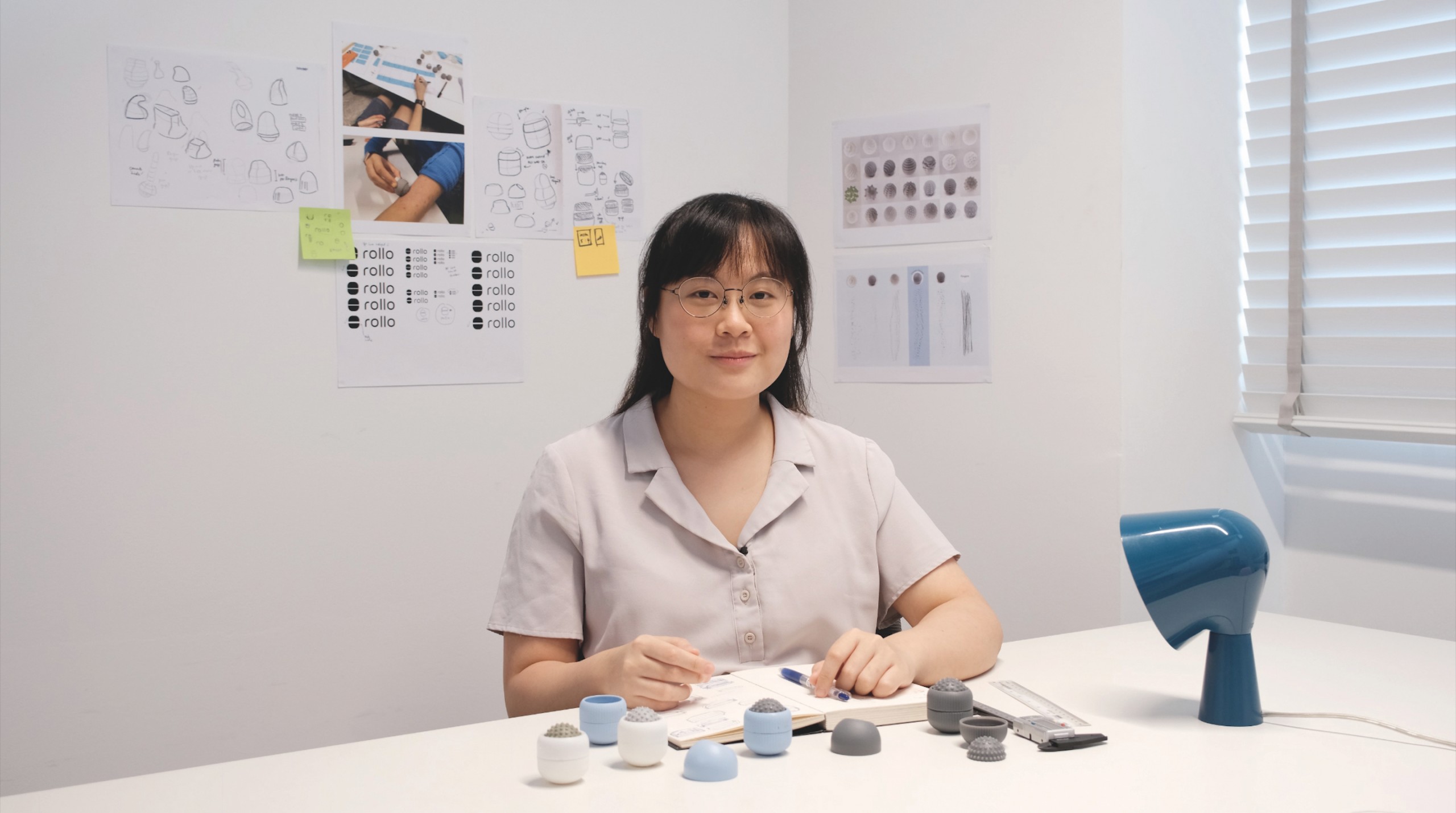
Image courtesy of Rollo
Koh Bei Ning,
Founder of Rollo
What inspired you to focus specifically on designing solutions for chronic itch conditions like eczema?
Rollo was inspired by my own experience with eczema, having to cope with the intrusive discomfort of flare-ups. At 14 years old, I developed eczema on the back of my thighs and on my lips. It was an extremely trying period of my life. The itch was incessant and would weigh on my mind constantly. My skin, inflamed and dry, affected me physically, mentally and socially. I remember struggling with routine fatigue – from all the creams I had to put on regularly and feeling exhausted from the constant discomfort. Beyond my own experience, I learnt that there is a shared sense of hopelessness that chronic itches, like eczema, can bring into the daily lives of those struggling with it.
Being a final-year Industrial Design student at that time, I wanted to explore the role design can play to improve the way chronic itch is managed. How design can provide an alternative perspective from science and medicine. This includes trudging on the line between medical theory and the patient’s reality. Medical theory tells us to not scratch, while individuals compare that to ‘holding their bladder’. Scratching becomes unavoidable for most despite knowing that it can worsen their skin condition. Skin gets torn during scratching and individuals become stuck in the itch-scratch cycle. So, I wondered what a less harmful alternative might look like. How might we make itch relief products feel less cold and clinical? What if we designed with the psycho-social stress chronic itch individuals struggle with in mind?
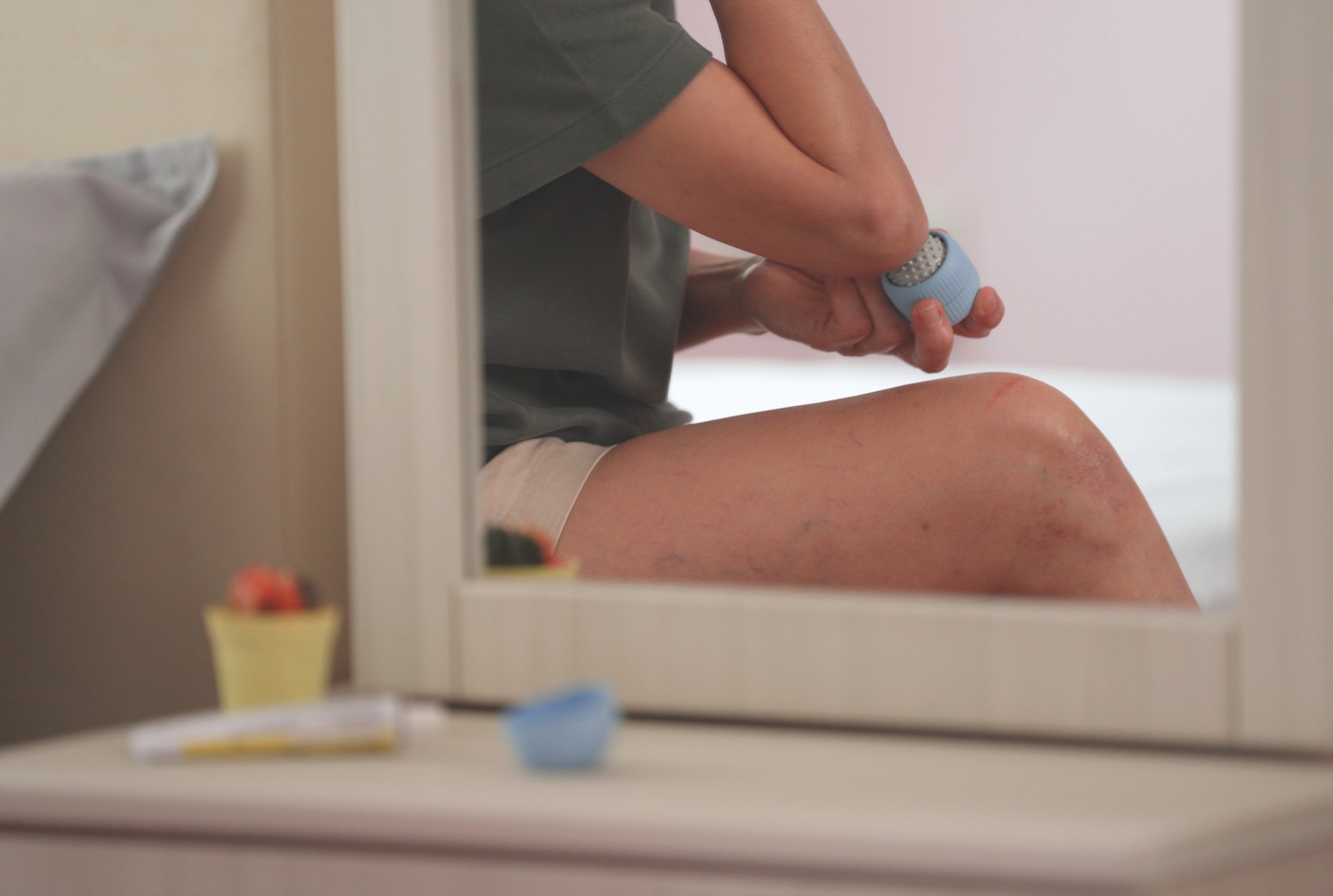
Image courtesy of Rollo
What were the main design challenges you faced in creating the Rollo device, and how did you overcome them?
A large part of Rollo’s design process lies in the design of the ball’s texture. The subjective nature of relief was initially difficult to navigate during feedback sessions. In the initial rounds of user-testing, it became apparent that every individual perceived relief differently. Benchmarks in the form of existing & familiar sensations (i.e., a backscratcher, a smooth rolling ball) were included to mark the scale, to make sense of the given ratings & sensation each user was feeling – like how certain design elements would tend to translate into certain sensations. The user feedback played an important role in informing the iterations that would follow, of which 28 different versions were explored until the sweet spot of relief was achieved. Rollo had to be relieving enough so users don’t feel the urge to use their fingers, yet gentle enough to provide a sense of security even when users roll it vigorously during an intense flare-up.
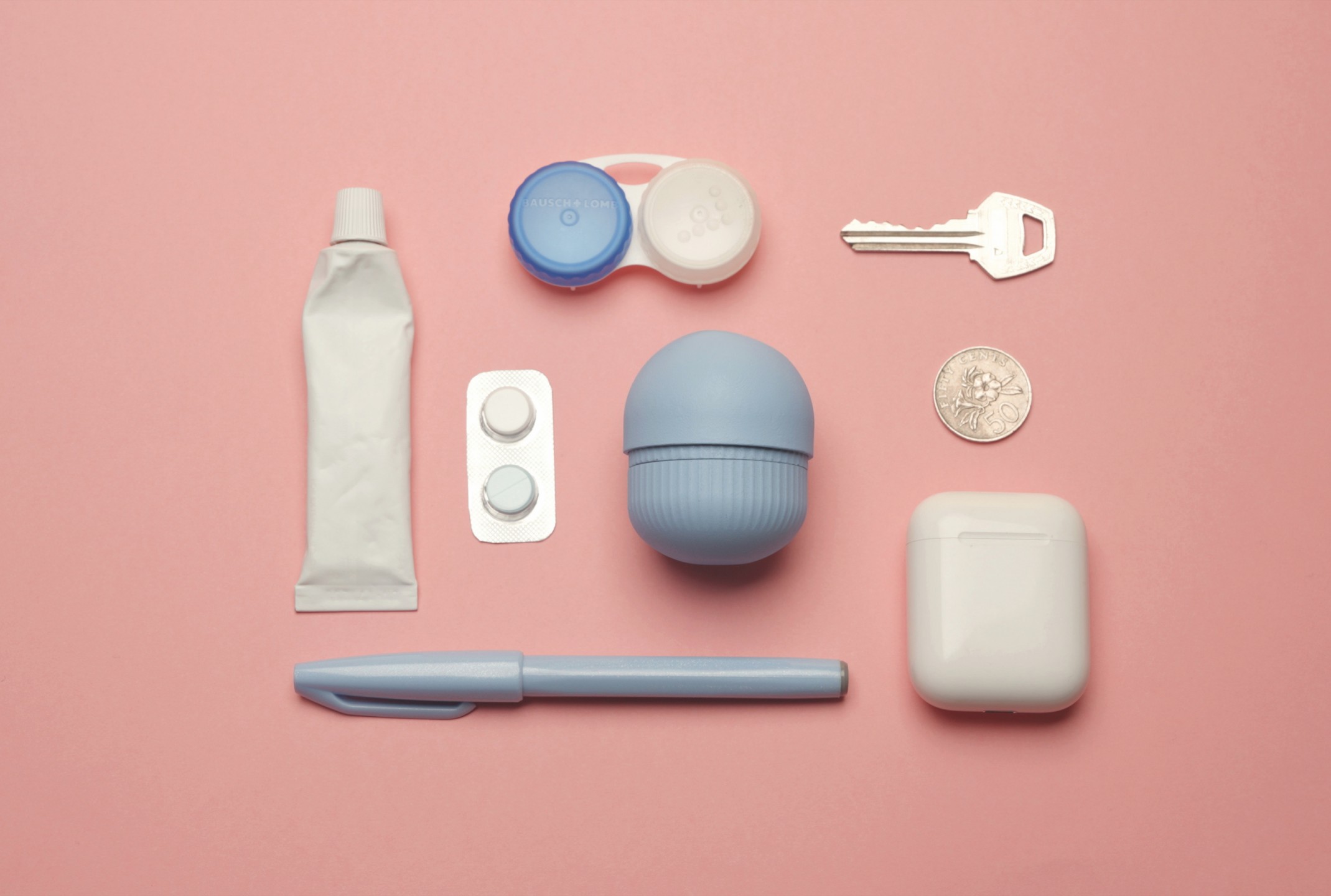
Image courtesy of Rollo
Can you describe the journey from concept to market, particularly the challenges faced in the crowdfunding phase?
I started the journey exploring the product positioning of Rollo by speaking to professionals from a variety of backgrounds. This included dermatologists, professionals in medtech and more. Rollo is currently a lifestyle product made for general itch relief. Reaching out to manufacturers also helped me to understand the manufacturing challenges that came with our initial design.
This extension of the design process was particularly eye- opening as I had not experienced before in school. Rollo was lucky to have received strong media coverage when it was awarded the James Dyson Award in 2022. This helped us to grow our following several months leading up to the crowdfunding campaign launch in June 2023. Interest from
the public also helped to further validate the struggles that
Rollo aimed to tackle, which provided much encouragement whenever the preparation process got tough. Preparing the crowdfunding campaign took around 8 months, while I was under a 1-year Incubation Program at the Design Incubation Centre (DIC) in the Division of Industrial Design, NUS. The team at DIC assisted me in navigating manufacturing meetings, producing communication/marketing materials and more. Crowdfunding was a meaningful way to let those who believe in Rollo help make it happen, aligning with its initial motivation and user-driven design process.
In preparation for the campaign, I had to take on many roles – such as devising a business plan, a marketing plan, copywriting, handling customer service, logistics and more. With no background in business, it was challenging to navigate this aspect of commercialising a product – such as managing its cost and the amount of capital we would require to crowdfund. There was no accurate way to foresee the response we would get for our campaign prior to its launch. If the amount collected falls below our target, pledges will be returned to our backers, and alternative ways to make Rollo happen would have to be explored. I remember having to reconcile my desire to design the most ideal product and the need to build a sustainable business, to manage the realities of manufacturing a small-batch production locally, while still keeping Rollo affordable and accessible.
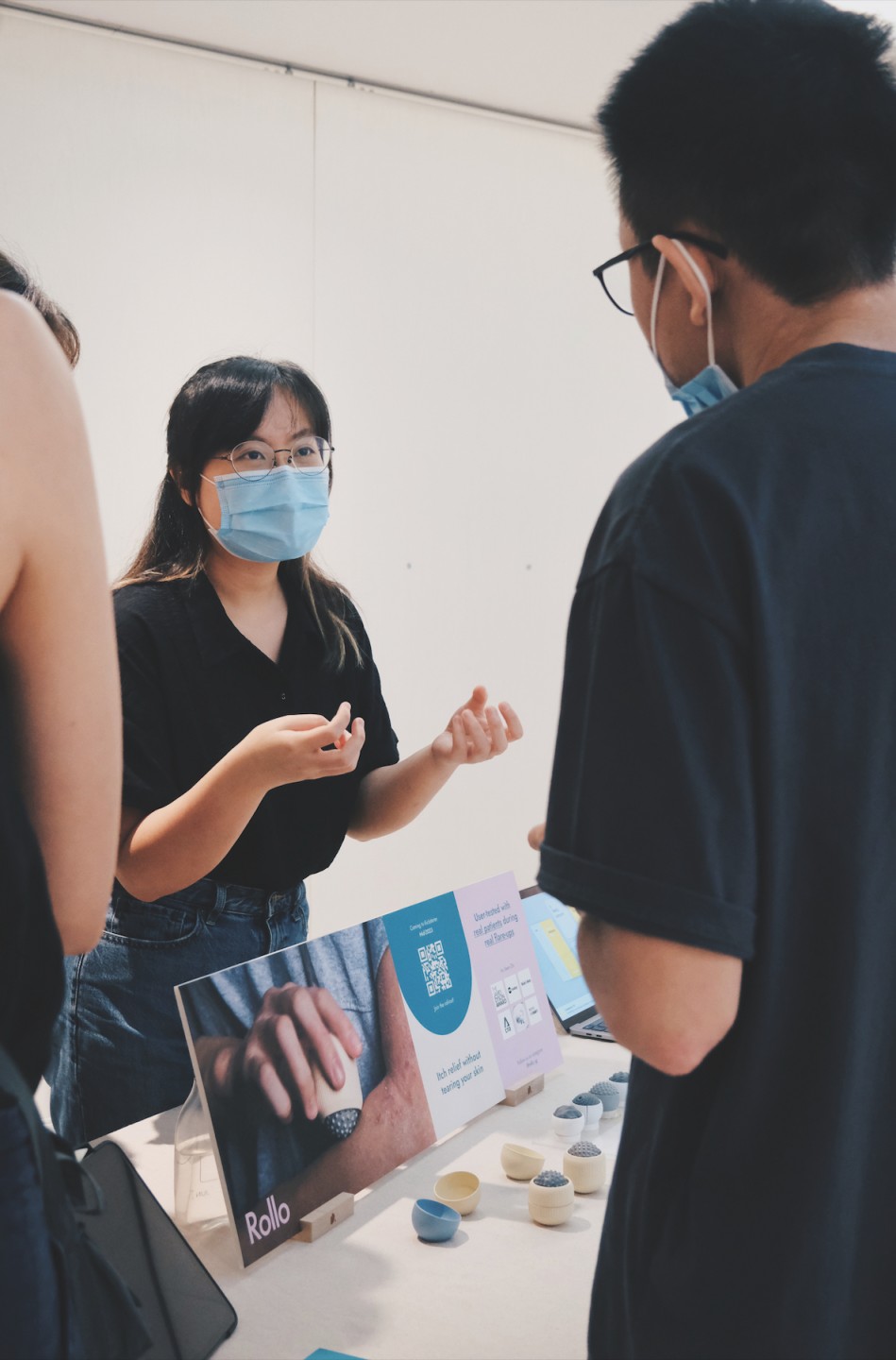
Image courtesy of Rollo
What are the key factors that you consider when designing medical devices intended for daily use?
Beyond solving the problem, I wanted Rollo to coexist with one’s daily life, to help users better manage their condition. These considerations are translated into the holder design of Rollo, in its size, form and colour. Rollo’s holder consists of a cap, and a 2-part body, which can be taken apart for an effortless and thorough wash. The cover will then keep the ball clean when users decide to take it with them as they go about their day. Its straightforward design lets users easily access it during a flare-up so they can relieve their itch and quickly return to their interrupted task right after.
Being palm-sized, Rollo can be easily concealed to avoid drawing attention during usage in public. Itch relief products can often feel cold, embarrassing or unsightly to use. Rollo is a form of self-care that considers the mental stress of chronic itch, such as guilt associated with scratching, social judgement and a sense of helplessness. By providing a safer alternative, Rollo wants to address these neglected needs to help users feel in control of their skin again.
What feedback have you received from users of Rollo, and how has it shaped the evolution of the product?
The weight of Rollo’s ball is something we included after the
last round of user testing back in April of 2023. 3D-printed prototypes, with a rather light ball, were used in these tests. Rollo became a little tiring to use after some time as users felt a need to consistently apply downward pressure. The lighter ball also created louder rattling sounds which made them self-conscious to use in public. A weighted ball was, hence, introduced to provide a more satisfying rolling experience.
Visit rollo.sg for more information.
This post was adapted from an article originally published in the July 2024 issue of SquareRooms.



